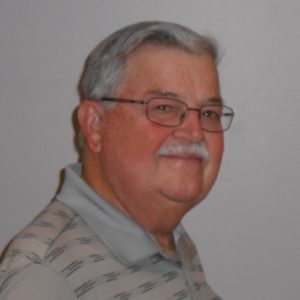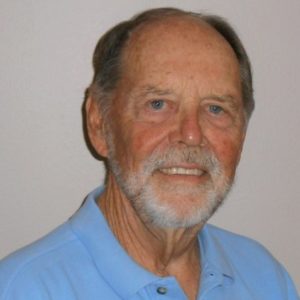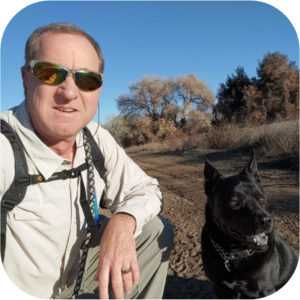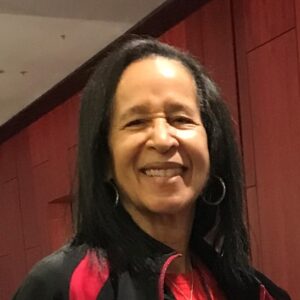April 2022
Honoring Yesterday – Protecting Tomorrow
Vol. 53, No. 4
April Calendar of Events
14—(Thurs.) RESDC Board of Directors Meeting
9:30 a.m., Via Zoom Web Conferencing
View the NETWORK
as a printable PDF
Are you on social media?
Stay connected with us!
![]()
![]()
QUOTE OF THE MONTH
No man will make a great leader who wants to do it all himself or get all the credit for doing it.
▪ Andrew Carnegie
PRESIDENT’S MESSAGE
By Chris Heiserman
 The State of our Union overall is pretty fractured, and the whole world is on edge. Still, the courage of the Ukrainian people under siege is something to admire. How fortunate we are to be Americans. Our personal or political challenges pale in comparison to displaced families facing life and death situations as their country is immersed in a horrific war.
The State of our Union overall is pretty fractured, and the whole world is on edge. Still, the courage of the Ukrainian people under siege is something to admire. How fortunate we are to be Americans. Our personal or political challenges pale in comparison to displaced families facing life and death situations as their country is immersed in a horrific war.
Our publication deadlines prevent us from adequately covering current events; however, on issues of major national or global importance like international conflict or the pandemic everyone is glued to broadcast news anyway. Our efforts to add perspective will always be retrospective and may sometimes be overtaken by real events. Bottom line – while trying to figure out how to gracefully and safely exit the pandemic that upended our lives for two years, our hearts go out to those struggling to survive a disastrous unprovoked invasion. This is the latest humanitarian crisis in an increasingly troubled world, but the United States will do what it always does: help as much as it can, nationally and individually.
RESDC Members Successfully Rounded Up March 2nd
About three dozen RESDC members showed up “in person” at Hooley’s Public House in La Mesa March 2nd to toast the return of RESDC Roundups! Some photos of our happy smiling faces can be found on page 8. Some of our retirees came to the event hoping to reconnect with friends and former colleagues – and several did! We billed the returning Roundup as a test of members’ comfort level with social gatherings and I believe we passed. Participants were happy being out in public again. This bodes well for bringing back other traditional in person social and educational meetings that members have always enjoyed. Barring the appearance of new variants or complications as the pandemic continues to recede, you are invited to the rejuvenation of our patriotic Flag Day Luncheon on June 30th. (See Save the Date)
State Retirees Get Big COLA Boost
It was reported recently in the Sacramento Bee that cost-of-living adjustments (COLAs) for retirees in the California Public Employees Retirement System (CalPERS) will be 4.7% this year. This is apparently the largest COLA hike in 32 years, and officials suggest high inflation is the primary reason for the size of the increase.
State workers who retired between 2006 and 2014 will get the 4.7% COLA bump. Other CalPERS retirees will see increases ranging between 2% and 4.7%, depending on the year they retired. According to the Bureau of Labor Statistics, inflation increased 7% through 2021. About 750,000 retirees and beneficiaries receive CalPERS pensions. The COLA increases are effective May 1st.
Tech Companies Marketing to “Digital” Seniors
The pandemic drove everyone deeper into technology, fostering familiarity and experience with social media and virtual platforms like Zoom. As noted in a February 2022 online post from the Axios news organization, a niche group that has caught the attention of tech companies is older Americans who learned to shop online, enjoy social media and even use Virtual Reality headsets that can help combat isolation and loneliness in a “stay at home” world.
A report from Euromonitor lists “empowered elders” as a top-10 global consumer trend for 2022. Some statistics cited in the report include:
- Among seniors (60 and older), 60% visit social media sites at least weekly, and 21% play video games.
- 82% have a Smartphone.
- In addition to browsing the internet and shopping online, many tech-savvy seniors socialize virtually, as well as access health, financial and educational information online.
The article cited a survey by Ericsson’s Consumer Lab that found seven in 10 seniors ages 65-74 were interested in trying Virtual Reality headsets, primarily to acquire a skill or pursue a hobby. It said nursing home residents were using the headsets for virtual travel.
Another area where the pandemic has prompted business expansion is companies that sell the traditional medic alert buttons (“I’ve fallen, and I can’t get up.”). They found customers were activating the buttons more frequently not due to an emergency, but because they wanted someone to talk to or needed assistance reaching their doctor or finding a handyman. This of course resulted in companies creating new menus for service, turning the emergency monitoring button into a lifestyle device. □
THE LATEST ON SINGLE-PAYER
By Stan Coombs
 We’ve all heard the term “single-payer” in nearby conversations, often more fully expressed as “Single-Payer Healthcare.” But exactly what’s that phrase supposed to mean?
We’ve all heard the term “single-payer” in nearby conversations, often more fully expressed as “Single-Payer Healthcare.” But exactly what’s that phrase supposed to mean?
Wikipedia always seems to have answers. “Single-payer healthcare,” they say, “is a type of universal healthcare in which the costs of essential healthcare for all residents is covered by a single public system” . . .and hence,“single-payer.”
And, single-payer health care systems, Wikipedia explains further, may contract for the actual healthcare services from private organizations, or actually own and employ the healthcare facilities and personal. The phrase simply describes the mechanism by which healthcare is paid for by a single government authority and not by a private authority or some mix of both.
Wikipedia goes on. They note that the term single-payer arose from efforts to “characterize” the difference between the Canadian healthcare system, wherein the government pays private agencies to provide healthcare to qualifying residents, and the system of the United Kingdom, where the government actually owns and provides health facilities and services, and pays for services from them.
So why are we focusing now on a subject that’s become so controversial and is already so frequently covered by the media? Well, partly because healthcare’s extremely expensive, and due to that, become extremely important to retirees, and partly because there’s that ongoing controversy to cover.
A principal argument of single-payer healthcare proponents is its apparent cost effectiveness. Few doubt healthcare is expensive. Those high costs show up again and again. Americans are said to have spent $3.3 trillion on individual healthcare in 2004, more than $10,000 per capita. Fidelity Investments reports that a 65-year-old couple will spend more than $300,000 on healthcare and medical expenses during their remaining years, not counting long-term care costs. A private room for long-term care will set ‘em back another $100,000. Calculations by the U.S. Government Accountability Office, they told us in 1991, revealed we’d save enough in administrative costs alone to pay for universal health coverage, if we switched to the simpler single-payer system. That’s a thought.
So, what’s the picture been in our corner of the country? California first attempted passage of a state single-payer health system ballot initiative, Proposition 186, in 1994. Vigorously opposed, it failed with only a 27% vote of approval.
There followed multiple single-payer legislative proposals in the California State Legislature, with the first of those successfully passing in 2006. SB 840, “The California Universal Healthcare Act” then moved on to Governor Arnold Schwarzenegger’s desk where it was summarily vetoed. It’s reported to have been reintroduced and passed again, and vetoed again.
In 2017 SB 562, another single-payer proposal, “The Healthy California Act,” was introduced in the California Senate, sponsored by The California Nurses Association. Successfully passing the Senate, it was sent to the State Assembly and then placed on hold by Assembly Speaker Anthony Rendon, who expressed concern about funding.
SB 562 apparently turned out requiring that a new Healthy California Trust Fund be established to provide funding for the bill. States were already receiving federal funding for certain established healthcare services, such as Medicaid and Medicare, and the plan was to pool those funds with additional separate tax monies into the new required trust fund. California, however, first needed waivers from the federal government to allow the separate federal healthcare monies to be included into the required new pooled trust fund.
Skipping numerous other attempts that followed early-on, enter a new California Assembly Bill 1400 in 2021. And it’s this more recent element of California’s single-payer saga that brings the subject to our April 2022 edition of THE NETWORK, along with a February 2022 Cal Matters article entitled, “Why single payer died in the California Legislature, again,” by Alexei Koseff. Cal Matters describes itself as a nonprofit, nonpartisan newsroom committed to explaining California politics and policy.
Alexei Koseff begins his piece, “A bill for single-payer health care in California didn’t even get a vote in the State Assembly after its author couldn’t round up enough support before Monday’s deadline,” he grouched. “. . .advocates are incensed.” He continued, “The single-payer measure, Assembly Bill 1400, was the latest attempt to deliver on a longtime priority of Democratic Party faithful to get private insurers and profit margins out of health care. . .it (AB 1400) needed to pass the (California) Assembly by Monday (January 31, 2022) to continue through the legislative process.”
After hours of negotiations, Assembly member Ash Kalra, author of AB 1400, announced he wouldn’t bring it up for a vote. The bill needed 41 positive votes to continue its legislative journey, and Kalra reportedly believed it was short by double digits. “I don’t believe it would have served the cause of getting single payer done by. . .having it go down in flames and further alienating members,” he said.
While the small print in AB 1400 apparently didn’t address the matter of funding, a separate measure that did had reportedly been introduced. It proposed taxes on businesses and high-earning households estimated to raise as much as $314 million annually. Opponents, including the California Chamber of Commerce and dozens of insurers, health industry groups and associations of doctors and hospitals, called AD 1400 a massive tax hike and job killer.
The California Nurses Association, principal supporter of AB 1400, slammed Kalra, suggesting he provided colleagues political cover by not holding the vote. By not calling a vote, “We are protecting them,” reportedly stated the chairperson of the California Democratic Progressive Caucus, “from the negative scrutiny of a “no” vote.” □
SDCERA NEWS
GET YOUR MONTHLY SDCERA EARNINGS STATEMENT IN THE MEMBER PORTAL
You can now see your monthly earnings statement online in the SDCERA Member Portal. Log into your account or register today at memberportal.sdcera.org.
Visit www.sdcera.org for more information, or call the SDCERA Member Service Center at: (619) 515-6800 or email msc@sdcera.org. □
Pension Facts at a Glance
Approximately 6,000
public retirement systems exist in the U.S. according to the Census Bureau—some 299 state-administered plans and 5,977 locally-administered plans. These pension plans have 14.7 million active (working) members and 11.2 million retirees.
SAVE THE DATE
FLAG DAY—INDEPENDENCE DAY LUNCHEON
IN PERSON!
Thursday, June 30th
Ronald Reagan Community Center
195 E. Douglas Ave., El Cajon, 92020
We’re pleased to invite you to our first in person luncheon, post pandemic! Stay tuned to the May and June NETWORKs for more details on our program, and registration form. □
MEMBERS SHARE
TRAVIS JOHNSON – A 3500 MILE WALKER
 Travis Johnson and his dog, Nikko, started their long journey walking across America from coast to coast on March 5th. They started their trek at Friendship Park of the Californias, on the US-Mexico border, and will end their long journey at the West Quoddy Lighthouse in Lubec, Maine, on the US-Canadian border. The route will be at least 3,500 miles long, probably closer to 4,000 miles, and should take Travis and Nikko six to eight months, depending on how many things they do along the way. They are also raising money to help support a few organizations including The Wounded Blue, MADD, The ASPCA, and Kids and Teens in Court.
Travis Johnson and his dog, Nikko, started their long journey walking across America from coast to coast on March 5th. They started their trek at Friendship Park of the Californias, on the US-Mexico border, and will end their long journey at the West Quoddy Lighthouse in Lubec, Maine, on the US-Canadian border. The route will be at least 3,500 miles long, probably closer to 4,000 miles, and should take Travis and Nikko six to eight months, depending on how many things they do along the way. They are also raising money to help support a few organizations including The Wounded Blue, MADD, The ASPCA, and Kids and Teens in Court.
Travis was a Deputy Sheriff for 20 years until he was forced into an early medical retirement after being hit by a drunk driver while working an overtime shift. His injuries prevented him from being able to return to full duty.
This avoidable accident has forever change Travis’ life, but he’s learning to adapt and continues to live a happy, fulfilled, enjoyable life. It’s been his long-time dream to walk across America and he won’t let his injuries and constant pain stop him from fulfilling this dream. He has amazing support from his wife and son to help him through it all.
Travis has been an avid hiker and outdoorsman his whole life, and since Nikko has been in his life, he has been on most of his treks. Travis plans to share their adventures through social media. He will try to update the status of their trip on a daily basis, letting followers know where they start each day and where they end up, and what they do and see along the way.
Travis will be using Facebook, Twitter, Instagram, TikTok, and YouTube. His name on all social media platforms is A3500MileWalker.
Travis invites everyone to follow, like, subscribe, donate, share, and support them. To help support Travis and Nikko, please contact Travis at: A3500MileWalker@hotmail.com. □
RECENT EVENTS
Supreme Court Won’t Consider CalSavers ERISA Preemption Lawsuit. The U.S. Supreme Court recently declined to accept an appeal of a lawsuit involving the CalSavers Retirement Savings Program.
Launched in July 2019, CalSavers is available to self-employed individuals and to California workers whose employers don’t offer a workplace retirement plan. Under the program, savers contribute to an individual retirement account that belongs to them, with payroll deferrals being facilitated by their employer. Private-sector employers with five or more employees have to register with CalSavers by June 30, 2022, while employers with more than 50 employees were required to register by June 30, 2021.
The move by the Supreme Court comes after the 9th U.S. Circuit Court of Appeals affirmed a lower court’s dismissal of claims by a group that sought to block the program’s implementation. The lawsuit, filed by the Howard Jarvis Taxpayers Association, aimed to block CalSavers on the grounds that the federal Employee Retirement Income Security Act pre-empts it, thereby invalidating the program.
In its dismissal, the Circuit Court ruled in no uncertain terms that ERISA does not pre-empt CalSavers.
New Report: Americans’ Views of Public School Teachers and Personnel in the Wake of COVID-19. A recent national survey by The National Institute on Retirement Security finds deep public concern about the K-12 public school workforce. Americans’ Views of Public School Teachers and Personnel in the Wake of COVID-19 finds that 83% of Americans express concerns about public school staff shortages, while 81% are worried about workforce burnout.
This new national survey finds most Americans (89%) say K-12 public school staff deserve more respect, and they indicate that better pay (92%), healthcare benefits (89%) and pensions (86%) would help address workforce shortages.
The report’s key findings include:
- Americans are deeply concerned about teachers and public school employees. Eighty-three percent are worried about staff shortages, 81% are concerned about staff burnout, and 81% are concerned that fewer people are going into education. This concern is high across party lines.
- Americans value K-12 employees. Nearly all Americans (95%) say public school teachers and personnel are important to their community, while 89% say they deserve more respect. Eighty-eight percent say their pay should be increased.
- Healthcare and retirement benefits are viewed as magnets for attracting and retaining K-12 school personnel, and these benefits should be funded and protected. Ninety-two percent of Americans indicated healthcare benefits are a good tool to attract and retain teachers and school personnel, while 91% agree pensions also help. Ninety-four percent of respondents said elected officials must ensure teacher and school personnel pension and healthcare benefits are sufficiently funded.
To learn more, visit: www.nirsonline.org/reports/k-12survey/ . □
BOARD MEMBER PROFILE FRANCINE HOWELL
 Francine retired from the County of San Diego and City of San Diego on June 6, 2020. She was employed at the County, County Counsel for seven years as a Paralegal and City, Office of the City Attorney for 24 years as a City Attorney Investigator of which she was a supervisor for 12 years.
Francine retired from the County of San Diego and City of San Diego on June 6, 2020. She was employed at the County, County Counsel for seven years as a Paralegal and City, Office of the City Attorney for 24 years as a City Attorney Investigator of which she was a supervisor for 12 years.
She is a trustee at Bethel A.M.E. Church and Vice President of the Class Leaders Council. She served ten years as a board member and one term as President of her HOA, Bonita Vista Community Association. Most importantly she served 13 years as a board member, executive board member and Second Vice President of the Municipal Employees Association. She also served 13 years as a Steward and two terms as President. As serving on the MEA board she is proud that they were instrumental in over turning Proposition B and restoring new employees with a defined benefit retirement. They fought all the way to the California Supreme Court and were successful. □
WECOME NEW MEMBERS
Annette Anderson, Technology Office
Mary E. Hunter, SDCERA
Susan J. Miranda, Superior Court
Richard A. Park, Library
Holly G. Rucker, Health & Human Services
Russell Williams
The Surviving spouse of a member is eligible for RESDC membership. For enrollment assistance, please call: (866) 688-9229. □
BITS AND PIECES
Fran Powers celebrated her 90th birthday in February! Fran retired from the county in 1994. She retired from the El Cajon County Library. She and her husband also celebrated their 67th wedding anniversary in February!
Steve Collins and his wife, Barbara, celebrated their 25th anniversary by traveling in their motor home to visit several friends and family members in many different states. They experienced heat waves, snow, wind storms, hail, and lots of rain. Steve retired from Health & Human Services in 2012. Steve and Barbara are looking forward to many more travels in their RV now that the pandemic seems to be winding down. □
PURCHASE SEE’S CANDIES GIFT CARDS ONLINE
You can now purchase See’s Candies gift cards in our new Online Store using your RESDC discount!
RESDC members are offered $25 gift cards for $22, a savings of $3. Gift cards are redeemable at any See’s Candies location or online.
To purchase gift cards online, go to: resdc.wildapricot.org/online-store. We can only accept credit cards to purchase gift cards online. You may not purchase more than ten gift cards in one transaction.
Note: You need a RESDC member self-service login in order to access the online store. If you need one, please email resdc@resdc.net.
RESDC members are entitled to a 10% group discount on selected items at the two See’s Discount Stores: 3751 Rosecrans Street, San Diego, 92110; and 1830 Marron Road, Carlsbad, 92008. You must ask the See’s sales team which items are selected. You need to show them your RESDC membership card for the discount. Be sure to mention that you are a member of Retired Employees of San Diego County. Occasionally a RESDC member is denied the discount by a clerk at these See’s stores. When this happens, be sure to clarify that you are not an active County employee, but you’re a member of RESDC. The county no longer participates in the See’s group discount program. If you’re still refused a discount, ask to speak to a store manager.
The gift cards are redeemable at any of the See’s retail stores and for online purchases.
If you would like to purchase gift cards through the mail from RESDC, please address an envelope to RESDC, 8825 Aero Drive, Suite 205, San Diego, CA 92123. Enclose a check made out to RESDC for the number of gift cards you would like at $22 for each gift card. Be sure to include postage stamps so we can mail the gift cards to you. Enclose one postage stamp if purchasing less than five gift cards. If purchasing over five gift cards enclose 78 cents of postage. If purchasing over nine gift cards enclose 98 cents of postage. See the postage chart at: www.resdc.net/sees-candies-discount. We will supply the return envelope to put the gift cards into. □
IN MEMORIAM
Margaret Baley
Marilyn Broz, Public Works
Thomas Burke, Health & Human Services
Douglas Carey
Norman Carrillo, District Attorney
Janis Claunch, Environmental Health
Gwendolyn Cornell
Diane Crawford, Social Services
Antonio Dara, Superior Court
Dale Duhamel, Animal Services
Grace Estrada, Surviving Spouse
Nancy Fabra, Sheriff
Cynthia Forth, Sheriff
Phyllis Fowler, Data Processing
James Fox, Health & Human Services
Evelyn George
Leonard Giarratano, Assessor/Recorder/Co Clerk
Shirley Gray, Health & Human Services
Mary Hanson, Public Works
Lynne Happel-Welke, Health & Human Services
Sally Humphrey, Environmental Health
Virginia Hunt, Housing & Community Devel
Faye Hurst, Superior Court
Warren Jones, Facilities Management
Eugenia Jordan
Paul Lashbrook, Social Services
Louise Lecklitner, Health & Human Services
Judith Liggett, Surviving Spouse
Mary McLaughlin, Public Works
Susan Miller, Probation
Rosalinda Morris, General Services
Esther Napalan, Health & Human Services
Joseph Remley
David Rivera*, Sheriff
Murtha Robinson, Child Support
Jack Rouse, Surviving Spouse
Lorraine Solomon, Social Services
Loretta Stark, Surviving Spouse
Sharon Untiedt, Environmental Health
Thomas Uter
Donald Vanhooser, Sheriff
Elaine Woolley, Sheriff
Bryan Ziegler, County Counsel
*Active Employee
MEMBER PRIVACY
Any retiree or surviving spouse who does not want his/her death notice published in the “In Memoriam” column may notify the RESDC office and your privacy will be maintained.
The Surviving Spouse of a RESDC member is eligible for RESDC membership. For enrollment assistance, please call (619) 688-9229. □
RESDC Members Rounded Up In Person!
The March 2nd RESDC Roundup was a great success as about three dozen members gathered for the first time in more than two years for fellowship with former colleagues and friends. We billed the Roundup as a test of members’ comfort level with social gatherings and it was a great confirmation! We feel this indicates that we can bring back other in person social events and educational meetings! Stay tuned for announcements of our next in person events in future NETWORKs.
THE NETWORK is the official monthly newsletter of the Retired Employees of San Diego County, Inc. (RESDC), a private non-profit organization.
The information printed in THE NETWORK is believed to be from reliable sources. However, no responsibility is assumed by THE NETWORK for inaccuracies contained herein.
Business and Inquiries: Business matters and address changes may be recorded on our voicemail at any time, call (866) 688-9229. Please spell your name so the correct member record can be located.
Retired Employees of San Diego County, Inc.
8825 Aero Drive, Suite 205 | San Diego, CA 92123
Office Hours: 9 a.m. to 2 p.m. Monday through Friday
TELEPHONE: (866) 688-9229 Toll Free
FAX: (619) 688-0766
E-MAIL: resdc@resdc.net

